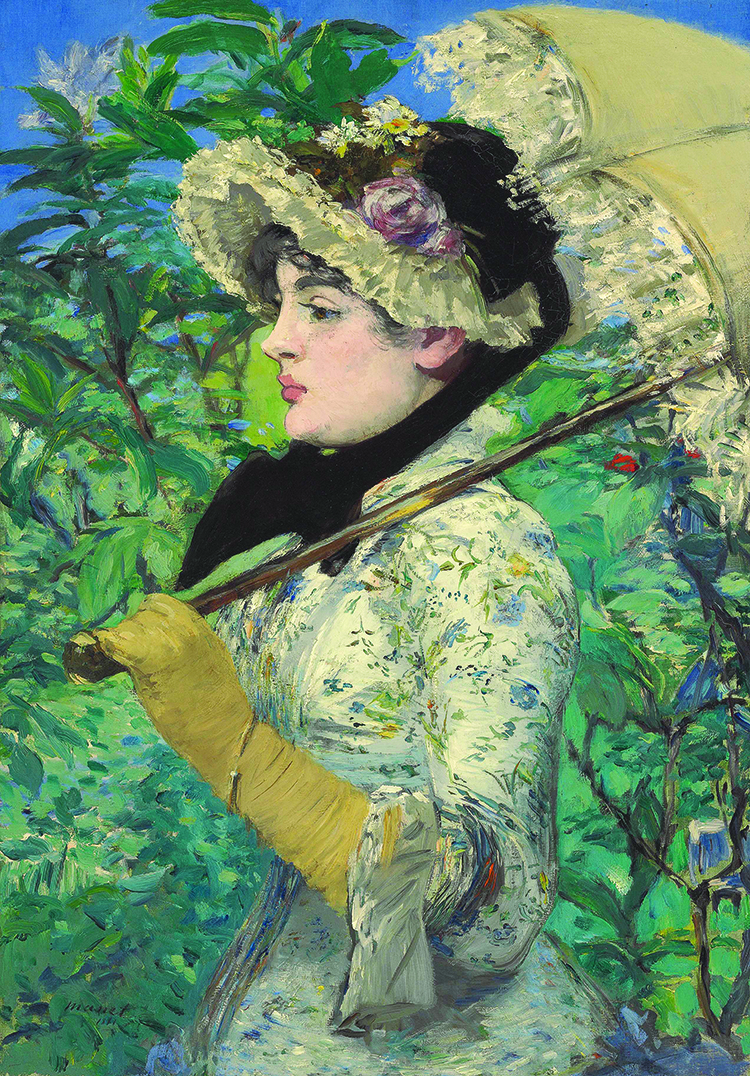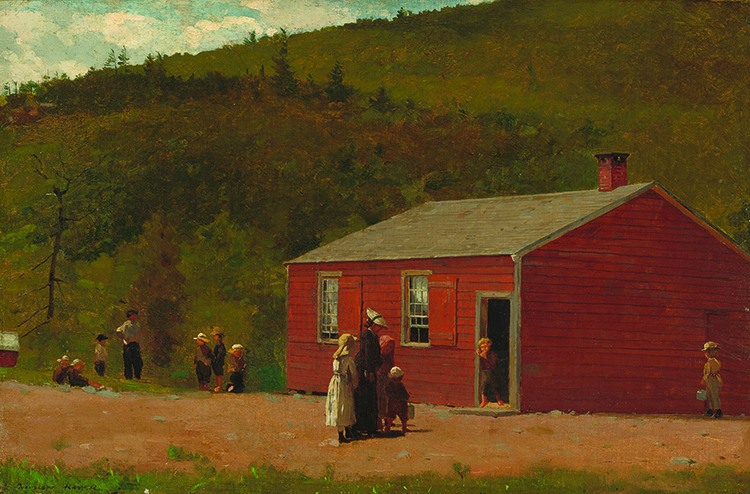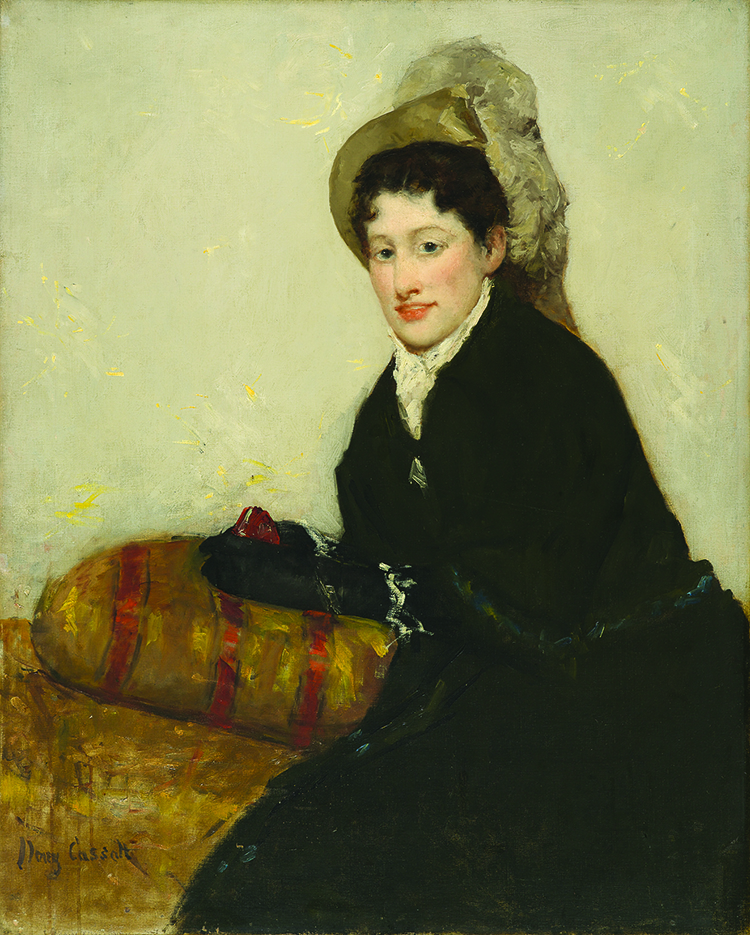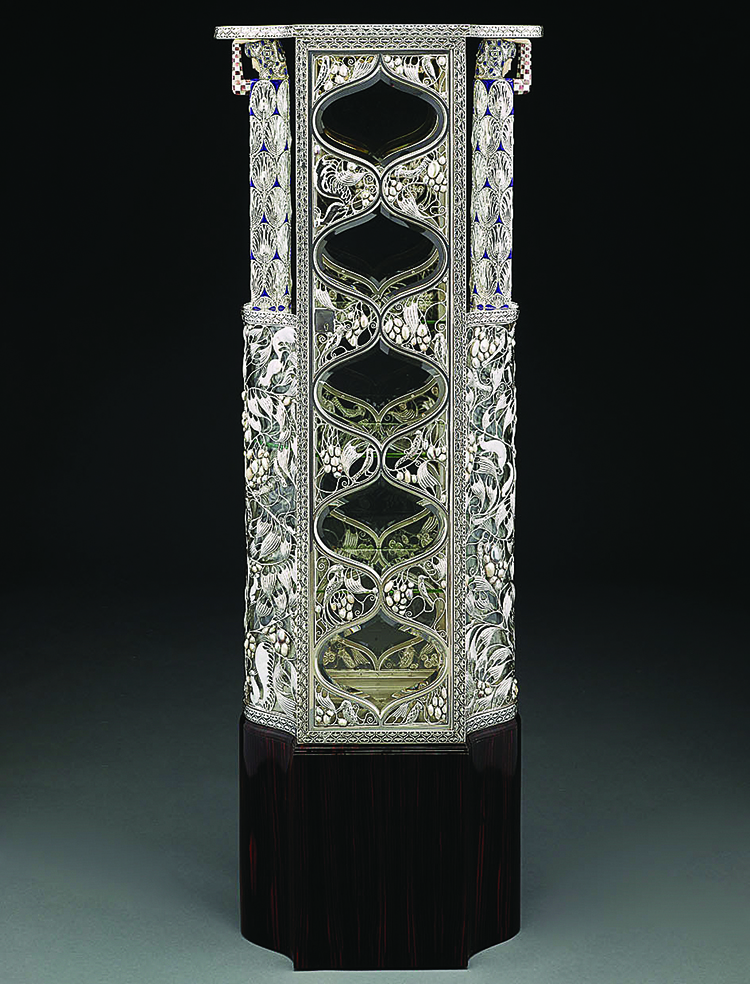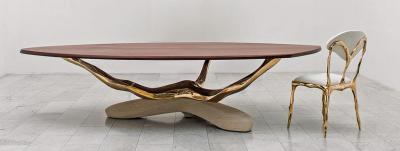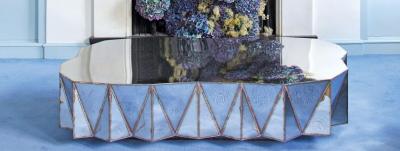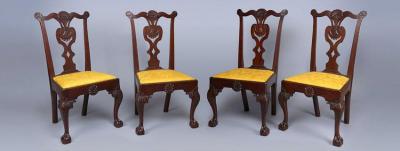Museum Acquisitions: Top Picks of 2014
An improving economy helped to bolster acquisitions at the nation’s museums in 2014. Donors “recovered their sense of financial well-being,” said Michael Botwinick, former director of the Brooklyn Museum and currently director of the Hudson River Museum in Yonkers, New York. Museum endowments “were restored to their pre-2008 levels or better.”
“The austerity that we saw in the past recession helped focus donors and institutions on long-term stability,” explained Kaywin Feldman, director of the Minneapolis Institute of Arts and board chair of the American Alliance of Museums. She noted that museum administrators particularly have sought to strengthen endowment funds for museum operations, although acquisition endowment funds— “for museums that have them”—also were more robust, the result of a generally rising stock market.
Still, according to Susan Taylor, director of the New Orleans Museum of Art and president of the Association of Art Museum Directors, the high prices of artworks at auction, “especially in the area of modern and contemporary art,” precluded a number of institutions from buying directly. Most museums without substantial acquisitions funds and wealthy patrons on their acquisitions committees use their money strategically to fill gaps in their collections. As a result, “donors are playing a larger role than ever before in building museum collections.”
Increasingly, the donors that institutions are targeting are of the “baby boomer” generation, “which more and more is in full retirement and downsizing,” said William Eiland, director of the Georgia Museum of Art at the University of Georgia in Athens. Calling this generation of collectors “the most affluent generation that has ever lived on earth,” he noted that “the dispersal of large numbers of pieces are taking place as boomers retire or die. We see that many objects will be brought to sale, donated, or bequested, and everyone is going after these things.”
So, let’s look at what some of the major institutions around the country acquired in 2014.
- Fig. 6: Paul Strand (1890-1976), Anna Attinga Frafra, Accra, Ghana, 1964 (negative); 1964 (print).
Gelatin silver print, Image: 7⅝ × 9⅝ inches.
Courtesy, Philadelphia Museum of Art, The Paul Strand Collection, purchased with The Henry McIlhenny Fund and other Museum funds, 2012.
© Paul Strand Archive/Aperture Foundation (2014).
New York’s Metropolitan Museum of Art spent $12.3 million for the seventeenth-century Portrait of Everhard Jabach and Family by Charles Le Brun, privately owned in England since the late eighteenth century (Fig. 1). No British museum could amass a matching amount of money to keep the painting from leaving the country. Additionally, the Met received as part gift, part purchase, part exchange an oil-on-board 1836 preliminary painting by Thomas Cole, View from Mount Holyoke, Northampton, Massachusetts, after a Thurderstorm—The Oxbow, a 1925 oil on canvas, The Furniture Factory by Japanese-born American artist Bumpei Usui, a pair of elegantly decorated French vases (Fig. 3).
The Souls Grown Deep Foundation, which aims to promote the work of self-taught African-American artists in the South, donated fifty-seven works to the Met, including paintings, sculpture, and twenty quilts made by the Gee’s Bend quilters of Alabama. The gift includes paintings by Nellie Mae Rowe (Woman Scolding Her Companion, 1981) and Thornton Dial (Out of the Darkness, the Lord Gave Us Light, 2003), as well as Joe Minter’s 2003 metal sculpture Four Hundred Years of Free Labor. Additionally, the Met purchased an early second-century A.C. carved Roman urn and received as a gift a group of forty-four glass works by Italian architect Carlo Scarpa that were created in Venice during the 1930s and ’40s.
According to a spokeswoman for the Museum of Modern Art, the amount of objects that came into the collection during 2014 seemed “like a significant number.” She added that the museum receives a large number of objects every year regardless of the stock market or of which political party is in charge of writing tax policy in Congress. Among the notable acquisitions in 2014 were a 1920 cut-and-pasted printed paper-on-paper work Tableau Rastadada by Francis Picabia (gift by exchange from Abby Aldrich Rockefeller), and a 2013 enamel-on-canvas Flying Carpet with Magic Mirrors for a Distorted Nation by Lari Pittman (museum purchase).
Museums with sizeable acquisitions endowments and acquisition committees (composed of moneyed collectors) are few. Leading the pack is the J. Paul Getty Museum in Malibu, California, whose endowment was $6.2 billion as of 2013. Among the works the museum picked up in 2014 were an 1881 painting, Spring (Fig. 2), by Édouard Manet, which sold last November for $65.125 million at Christie’s, as well as Manet’s 1882 pastel Portrait of Julien de la Rochenoire (no details released of where it was purchased or the price). Additionally, the Getty bought a 1908 three-and-a-half-foot tall marble Christ and Mary Magdalene by Auguste Rodin, and, in February, at Sotheby’s, an 1878–1879 drawing Indian Beggar ($4 million). The Getty Research Institute acquired archives (including 5,410 videotapes, more than 600 audio tapes, 131 linear feet of archival materials, and 246 original posters) from New York City’s The Kitchen, which, for the past forty years, has been an incubator of avant-garde visual and performing art.
Silicon Valley tech pioneer Thomas W. Weisel donated to the Fine Arts Museums of San Francisco approximately two hundred Native American objects—largely ceramics and textiles, as well as several drawings—spanning eight hundred years (Fig. 4). Washington, D.C.’s National Gallery of Art, which recently acquired the entirety of the Corcoran Gallery of Art, purchased its first work by Carrie Mae Weems, a 2002 photograph, May Flowers, and a series of screenprints by Romare Bearden from his Odysseus Suite. Additionally, it bought a fourteen-foot-long accordion-fold book, Portage (2000), with cut-outs affixed to each page, and an hour-long video (2001), both by James Nares. The museum’s most notable acquisition, however, was a bequest of sixty-two paintings, sculpture, and works-on-paper from Rachel Lambert Mellon, widow of National Gallery benefactor Paul Mellon (1907–1999), who died in March. This collection includes sixty-two works by Georges Braque, Alexander Calder, William Merritt Chase, Edgar Degas, Raoul Dufy, Winslow Homer (Fig. 5), Paul Klee, Edouard Manet, Claude Monet, Berthe Morisot, Camille Pissarro, Maurice Prendergast, Georges Seurat and Vincent van Gogh; his Still Life of Oranges and Lemons with Blue Gloves (1889) among the highlights.
Through a series of gifts and a purchase agreement with the Aperture Foundation, the Philadelphia Museum of Art acquired a core collection of more than three thousand photographs by Paul Strand (Fig. 6), adding to the six hundred Strand images already owned by the museum. Additionally, Keith L. and Katherine Sachs have promised the museum ninety-seven postwar and contemporary artworks—including works by Jasper Johns, Ellsworth Kelly, Richard Hamilton, Joseph Beuys, Richard Serra, Tony Smith, and Bill Viola.
- Fig. 14: Raphaelle Peale ( 1774-1825), Still Life with Strawberries and Ostrich Egg Cup, 1814. Signed and dated, lower left: “Raphaelle Peale June 1814.” Oil on wood panel, 12⅝ x 19-3⁄16. Courtesy, Seattle Art Museum; Acquired in memory of Ruth J. Nutt with funds from The General Acquisition Fund; Bill and Melinda Gates Art Acquisition Fund; the Kendrick A. Schlatter Estate; an anonymous donor; Thomas W. Barwick; Susan Winokur and Paul Leach; American Art Acquisition Fund; Patricia Denny Art Acquisition Endowment; 19th and 20th Century Purchase Fund; the Council of American Art; Geraldine Murphy; and from the following donors to the collection, by exchange: Eugene Fuller Memorial Collection; Estate of Mark Tobey; Estate of Earl Henry Gibson; Paul Denby Mackie in memory of Kathleen Lawler and Nona Lawler Mackie; Estate of Mrs. Reginald Marsh; Estate of Hollister T. Sprague; Mrs. John C. Atwood, Jr.; Norman and Amelia Davis Collection; Mrs. Brewer Boardman in memory of Mrs. Edward Lincoln Smith; Mr. and Mrs. Boyer Gonzales; Mrs. Frederick Hall White; Mr. and Mrs. George Lhamon; Ernest R. Norling; Mrs. Eugene Fuller; Milnor Roberts; Jane and David Soyer; Mrs. Reginald H. Parsons; Elizabeth Merriam Fitch and Lillian Fitch Rehbock; Mr. and Mrs. John H. Bolton; and Jacob Elshin (2014.23).
The North Carolina Museum of Art in Raleigh, which did not have any works by Mary Cassatt, now has one, an 1877–1878 painting, Portrait of Madame X Dressed for the Matinée (Fig. 7), which was given to the institution by anonymous donors and Charlotte Hanes in memory of her husband. Impressionist paintings also joined the collection at the Virginia Museum of Fine Arts in Richmond, including Camille Pissarro’s 1879 Royal Palace, Paul Gauguin’s circa-1889 Still Life with Bowl, Vincent van Gogh’s 1888 Daisies, and Georges Seurat’s circa-1882 Haystacks. These works were a bequest from the estate of Paul Mellon, a long-time trustee at the museum, on the death of his widow.
Museums sometimes have to give things back. This year, the J. Paul Getty Museum returned to Sicily a circa-425 B.C. statue of Aphrodite that had disappeared from the ruins in the town of Aidone at some point in the 1970s or ’80s, and a twelfth-century Byzantine illuminated New Testament to the Greek government. The Cleveland Museum of Art, the Met, and Yale also have been sending antiquities back to Italy, Greece, and Turkey, where gaps in the history of ownership have been identified. The Toledo Museum of Art has been negotiating the terms of returning sixty-four bronze statues to India that it acquired from Subhash Kapoor, who has been arrested on charges of smuggling and fraud.
Boston’s Museum of Fine Arts, which last year sent eight African sculptures back to Nigeria that were found to have been looted at some time, received as part of a bequest a late- nineteenth to early-twentieth-century metal, wood, and bone reliquary figure of the Kota peoples of the African nation of Gabon. They also purchased a stone-carved Egyptian head dating back to the eighth century B.C. From mid-summer through December, the museum held a retrospective of the work of Jamie Wyeth, which included a 1967 portrait of President John F. Kennedy (Fig. 8). The portrait now belongs to the museum as a part gift and part purchase from the artist and his wife, Phyllis. Wyeth took issue with the restrictions of federal law concerning donations of their work by living artists. “It’s a $2 or $3 million painting, and all I could deduct is the cost of the paint,” he complained; the museum provided some funds in appreciation.
Among the acquisitions from The Harvard Art Museums in Cambridge, Massachusetts, was the installation 258 Fake, a choreographed meditation by Chinese contemporary artist Ai Weiwei (b. 1957) depicting fragments of photography from eight years of his social, political, and artistic life. Also entering the collection was an exquisite and rare 13th-century Buddhist painting from the collection of Sylvan Barnet and William Burto, an oil on canvas painting An English Galliot at Sea Running Before a Strong Wind, by Willem van de Velde the Younger (Dutch, 1633–1707), ca. 1690, and a rare late-seventeenth-century New England joined table (Fig. 9) gifted by collectors Anne H. and Frederick Vogel III.
Hartford, Connecticut’s, Wadsworth Atheneum on the lookout for additions to its permanent collection purchased a 1616–1618 Self-Portrait as a Lute Player by Artemisia Gentileschi and received as a bequest fifty objects from Stephen Gray’s Arts and Crafts collection, which includes early Gustav Stickley furniture as well as pottery and metalwork. The Saint Louis Art Museum also received, among other material, an important example of Arts and Crafts furniture when collectors Mr. and Mrs. Edward J. Nusrala gifted a side chair carved with a lily from the Byrdcliffe Colony in Woodstock, New York (Fig. 10), by Zulma Steele-Parker in 1904, one of only two female designers active in the colony.
Still life paintings by Raphaelle Peale made it into at least two museum collections in 2014. The Seattle Art Museum purchased his Still Life with Strawberries and Ostrich Egg Cup (1814) (Fig. 14) from the Roy Nutt Family Trust; the painting had been on display at the museum on long-term loan. The Amon Carter Museum in Fort Worth Texas, also acquired Peale’s Peaches and Grapes in a Chinese Export Basket (1813); this was the first work by the artist to enter the museum’s collection. The Seattle Art Museum also received works from the nationally renowned Ruth J. Nutt collection of early American decorative arts, which included more than forty-five important examples of American art, silver, furniture, and needlework. The gift of Ruth Nutt’s silver (Fig. 13) now places the museum’s collection of this material as one of the finest in the West. Important silver was also part of the acquisitions at the Art Institute of Chicago, which included a rare circa-1660 wine cup by America’s earliest silversmiths, John Hull and Robert Sanderson of Boston, made for the First Congregational Society Church in Quincy, Massachusetts.
Among the Dallas Museum of Art’s 2014 acquisitions are a 1908 jeweled silver Wittgenstein vitrine (Fig. 11), a masterpiece standing over five feet in height, from Vienna, Austria, (purchase); an 1890s painting, Tired, by Spanish artist Ramon Casas (purchase); a late-nineteenth or early-twentieth-century four-horn community power figure in wood, metal, and fiber, from the Songye peoples of the Democratic Republic of the Congo (purchase); an untitled 1967 silkscreen-on-canvas work by German artist Konrad Lueg (purchase); and a 1970 semi-abstract painting, Marcia H Travels, by Guyanese-born British painter Frank Bowling (purchase).
- Fig. 17: Six-Gallon Crock, N. A. White and Son (1882–1886), Utica, New York, 1886. Stoneware with dark blue cobalt decoration. 14¼ inches high x 13 inches diam.
The crock was made the last year of the partnership of Nicholas A. White and his son Charles, who continued the business after his father’s death under a new name, the Central New York Pottery.
Courtesy New York State Museum, Albany, New York (H-L2014.3.3).
The Blanton Museum of Art at the University of Texas at Austin received a gift of approximately 120 modern and contemporary Latin American artworks totaling $10 million from alums Judy and Charles Tate of Houston. The collection includes paintings, drawings, prints, sculpture, and mixed media works by artists Frida Kahlo, Diego Rivera, Tarsila do Amaral, Joaquín Torres-Garcia, and Fernando Botero (Fig. 12) among others. Another Texas institution, the Museum of Fine Arts, Houston, acquired a number of outstanding items that spanned the centuries, including a French Limoges painted enamel ewer, circa 1550–1585, a Josef Hoffman silver centerpiece, and 1989 acrylic cabinet by Japanese designer Shiro Kuramata (Fig. 15), and as well some examples of early glass for Bayou Bend, including an English wine bottle and goblet made by the New England Glass Company (Fig. 16).
Under the heading of converting trash into treasures, scrap metal mogul Adam Weitsman donated his collection of nineteenth-century American decorated stoneware (Fig. 17), valued at roughly $10 million, to the New York State Museum in Albany.
Two museums, the Baltimore Museum of Art and the San Francisco Museum of Modern Art, have been conducting collections campaigns; Baltimore, celebrating the museum’s founding in 1914, and San Francisco, its expanded facility that will open in 2016. San Francisco’s expansion will include a center for photography and, in preparation, the museum has been actively seeking to increase its holdings in this area. More than one thousand photographs have been bought or donated in this campaign, which began in 2011. Among the 2014 acquisitions are Stephen Shore’s 1974 chromogenic print Fifth Street and Broadway, Eureka, California, September 2, 1974 (purchase); Hal Fischer’s 1977 black-and-white Street Fashion: Basic Gay, from the series Gay Semiotics (purchase); Robert Adams’ complete series of 119 black-and-white prints Gone? Colorado in the 1980s (promised gift); and Larry Sultan’s Isleton, from the series Homeland (gift). The Baltimore Museum of Art also sought and found works of contemporary color and black-and-white photography by Dawoud Bey, Edward Burtynsky, Rodney Graham, Richard Misrach, and James Welling; all gifts from Baltimore collectors Tom and Nancy O’Neil.
Of related interest, the Baltimore Museum of Art, which dropped its general admissions fees in order to attract more visitors, isn’t waiting for people to show up. Creating a museum on wheels—the BMA Outpost—the museum brings reproductions of artworks in the institution to neighborhoods throughout the city. Crystal Bridges Museum of American Art acquired a rare Frank Lloyd Wright House Usonian house know as the Bachman Wilson House, located in the Borough of Millstone in Somerset County, New Jersey. In danger of destruction from encroaching waterways, the house will be disassembled and moved to the museum’s grounds in Bentonville, Alabama.
And finally. Many people know Phil Collins, the British rock star, for his music, but he also has one of the largest collections of Alamo artifacts in the world, which, in 2014, he donated to the historic site in Texas that is building a $100 million center to showcase this assembly of vintage weapons and other items. And, the Norman Rockwell Museum in Stockbridge, Massachusetts, received a donation of a five-thousand-plus assortment of artwork (some by Rockwell), as well as the bulk of the archives of the Famous Artists School in Westport, Connecticut, which until it declared bankruptcy in the early 1970s was the leading correspondence art school in the world.
To view a selection of additional museum acquisitions for 2014, visit Antiques & Fine Art magazine’s affiliated website www.InCollect.com.
Daniel Grant is a freelance writer specializing in the art industry.
This article was originally published in the Anniversary 2015 issue of Antiques & Fine Art magazine, a digitized version of which is available on afamag.com. Antiques & Fine Art, AFAmag, AFAnews, and AFA Publishing are affiliated with InCollect.com.
















